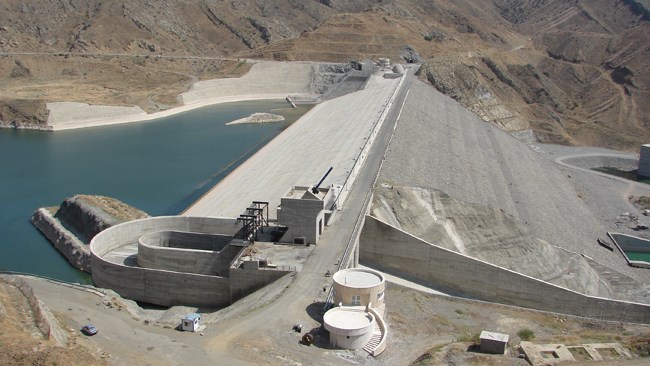Iran, Azerbaijan to build 280-MW power plant at border dam
29 December 2020
Iran and the Republic of Azerbaijan have agreed to a hydroelectric power plant on the joint Khoda-Afarin dam on the Aras River straddling the border between the two countries.
Iran and the Republic of Azerbaijan have agreed to a hydroelectric power plant on the joint Khoda-Afarin dam on the Aras River straddling the border between the two countries.
The capacity of the facility would be 280 megawatts (MW), according to First Deputy Prime Minister of Azerbaijan Shahin Mustafayev who was in Tehran to sign the bilateral agreement.
“Construction of the power station will start soon,” Mustafayev said. A preliminary agreement to build the power station in Azerbaijan was reached in 2019.
Khoda-Afarin is an earth-fill embankment dam, with the capacity to hold 1.6 billion cubic meters of water on the Aras River. It is located 8km west of Khomarlu, (capital of Khoda-Afarin County) in Iran's East Azarbaijan Province and 14km southwest of Soltanli in Jabrayil District in the neighboring republic.
The senior Azeri official said interaction between the two states is growing in all areas, especially energy, and expressed the hope that incomplete plans in and around Aras River would become operational soon.
“Azerbaijan’s borders with Iran are borders of friendship and evelopment,” he stressed, and said that timely implementation of joint agreements, such as the Rasht-Astara railroad and Khoda-Afarin power plant construction projects, would benefit both peoples.
Iran’s Energy Minister Reza Ardakanian who signed the agreement said that Iran-Azeri collaboration has improved in recent years, especially in the power sector.
Iran has said it is planning to connect its power grid to Russia through the Republic of Azerbaijan. Ardakanian said that Iran is trying to synchronize its power grid with Azerbaijan.
In 2018 Azerbaijan, Russia and Iran created a working group to chart ways to synchronize their energy infrastructure. The network will connect the three power grids and help curb outages in summer.











